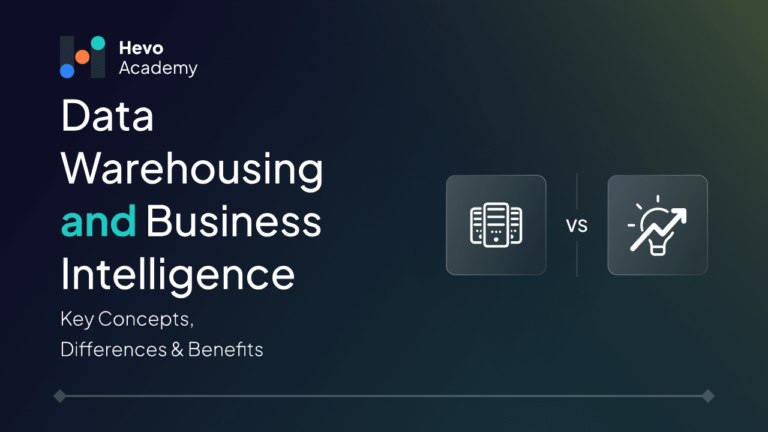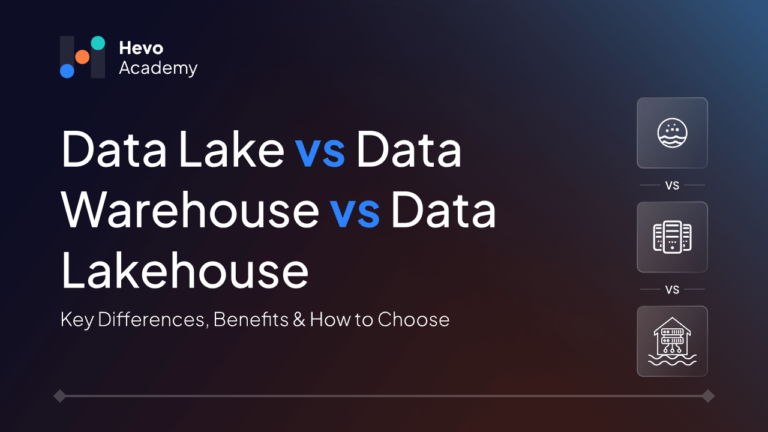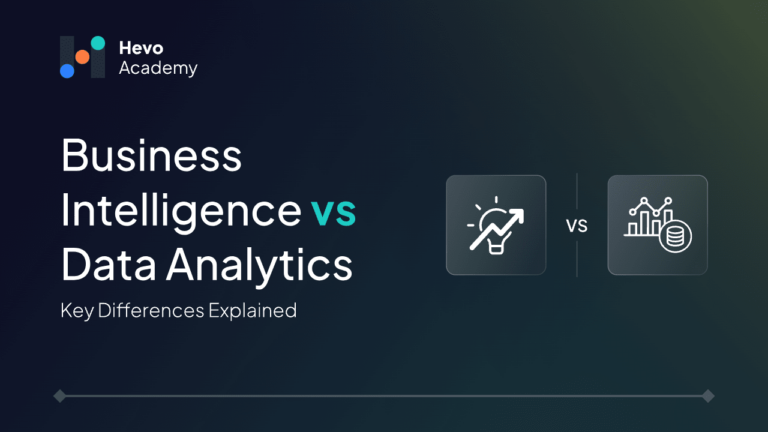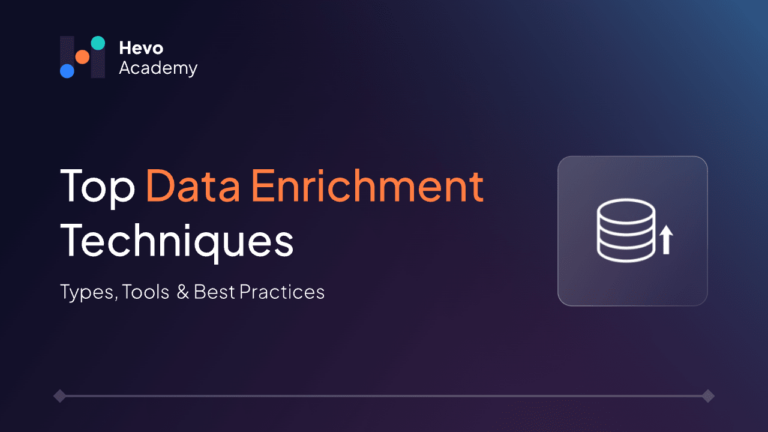Data warehousing and business intelligence are two phases in the digital reformation that are closely related to storing, securing, and using information. Data warehousing transfers and stores data from different sources, while business intelligence deals with tools and methods that are used to analyze and access data collected and stored in the data warehouse.
Table of Contents
In modern businesses, data warehousing and business intelligence are the major components of a sound data-based strategy that provides deeper insight into industries. Businesses now rely on correct insights and data-driven decision-making strategies to provide timely, accurate, and reliable intelligence.
What Is Data Warehousing?
Data warehousing can be referred to as collating, assembling, storing, and managing huge data from multiple sources and providing the data for the stages of business analytics and intelligence. A data warehouse serves as a data bank from which analysis can be carried out with business intelligence tools. It is a primary medium that offers a sole source of accuracy for reliable and accurate data analysis to aid in decision-making for businesses.
You can explore the difference between CDP vs data warehouse to get a better understanding of the two platforms.
What Is Business Intelligence?
Business intelligence refers to the methods and technologies used to analyze, process, and access data collected and stored in the data warehouse to provide reliable and accurate data that helps businesses make better decisions. This process helps analyze trends and support strategic planning in business. Business intelligence enhances operational efficiency, enables decision-making, and a dynamic edge across all business levels.
How Data Warehousing Supports Business Intelligence?
Data warehousing and business intelligence are two complementary technologies that work together to provide organizations with useful insights.
- Data Sources: Before analyzing data in the warehouse, it must be extracted from its sources. Audits need to be carried out in the organization’s various departments to collate and store current data, which is then channeled into the data warehouse so that the analytic teams can review the entire organization’s data library. Data sourcing uses tools like Hevo, Matillion, and Supermetrics to help the analytic teams organize data.
- ETL Processing: ETL stands for extract, transform, and load. It is a key component in processing data from different sources into a single data warehouse. ETL restores the data to ensure quality and consistency across all databases, regardless of where the data originated. It involves taking the raw data and ensuring it is ready for analytical purposes.
- Business Intelligence Tools: Business intelligence tools transform the data stored and processed in the data warehouse into actionable information.
- Reporting: The reporting layer gives a business intelligent interface with visualizing and analyzing the data that is stored in the warehouse.
- Data Modeling: Data modeling creates a visual representation of data within an information system. It helps create a unified and logical database that reduces storage requirements and ensures efficient retrieval of data. You can explore the best 20 data modeling tools to use in 2025
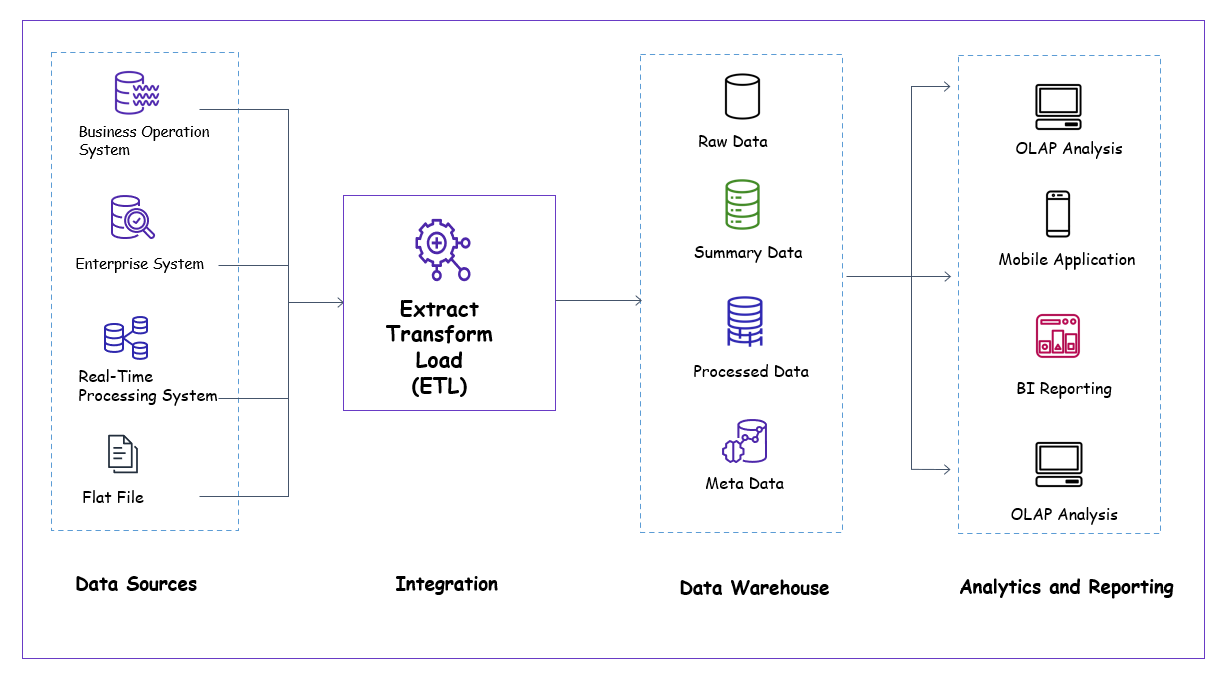
What Is the Difference Between Data Warehousing and Business Intelligence?
| Aspect | Data Warehouse | Business Intelligence |
| Aim | Data warehousing aim is to provide business intelligence users with a comprehensive and well–structured view of the available organization’s data | Business intelligence aim is to allow users to make logical data-driven decision |
| Components | Data warehousing consists of Dimensions and data held in Fact Tables. It involves data extraction from various sources and data mapping to meet target system requirements. | It consists of business charts, reports, graphs, data visuals, and other such tools. It centers on using tools to extract useful insights from data stored in the data warehouse. |
| Data Flow | It takes data from multiple sources and organizes it for efficient business intelligence analysis | Business intelligence takes data from the data warehouse for analysis |
| Function | Data warehousing is a data storage system that works at the back end to facilitate comprehensive data analysis | Business intelligence is a business decision support system that works at the front end |
| Processes | Data warehousing deals with collecting, cleaning, managing, transforming, disseminating, and recovering data | Business intelligence deals with visualizing and mining data, reporting tools, and online analytical processing. |
Benefits of Integrating Data Warehousing with Business Intelligence
Data warehousing and business intelligence are different but related concepts. Data warehousing involves data storage solutions, while business intelligence ensures that data are accessible to users, enabling them to explore, interact, and make decisions. Having the right data warehouse and business intelligence tools reduces costs, creates new business lines, enriches existing products, optimizes business processes, and creates a competitive advantage.
- Data Mining: Data mining is also referred to as knowledge discovery, helps identify useful patterns, establish relationships between elements, and foresee future results based on business goals. It extracts usable data from an extensive dataset and also helps spot trends, errors, or patterns within it.
- Data Storytelling: Data storytelling involves summarizing data analysis into simple terms to inform a strategic business decision, making insights understandable and actionable.
- Querying: Querying allows businesses to ask and receive answers to questions about their data and check its validity and accuracy. Also, the right data must be in place to get quantitative and reliable answers.
- Performance Metrics: Metrics are used to measure activities, the performance of a business, its employees, behavior, or specific campaigns. Performance metrics are the results of the analysis that are compiled for further analysis.
- Data Visualization: Data visualization refers to collating data and representing it visually to improve understanding and better decisions. It includes charts, data stories, infographics, and diagrams. Data visualization tools help bring information more compellingly.
Common Challenges in Data Warehousing and Business Intelligence Implementation
Data warehousing and business intelligence thus offer many benefits, but executing and using them also presents challenges. Below are some of these challenges:
- Integrating with Existing Systems: Integrating data from various sources into a data warehouse involves careful data processing and continuity with an existing structure, which can be time-wasting.
- Cost Management: Maintaining a data warehouse and business intelligence structure involves significant finance allocation and investment in employees and technology. Achieving efficient operations relies on ongoing cost management and technology optimization.
- Data Security and Privacy: Executing access controls, regular backups, and encryption is very important to protect data security and privacy against unauthorized access, compliance violations, and data breaches.
- Data Quality: Sustaining high-quality and consistent data is necessary for analysis and reporting. Handling issues like inconsistencies, duplicate entries, and missing values through data imputation and inaccuracy can be challenging, but implementing CDC technology can minimize the issues and maintain consistency.
Conclusion
Data warehousing and business intelligence have become the measure for many business operations in a data-driven economy because more data are collected and used by organizations than ever before. Together, they proffer a reliable, centralized, and integrated platform for data storage. Data warehousing serves as a component of business intelligence, providing a unified warehouse to store and organize data from multiple sources, ensuring efficient analysis and extracting useful insights for informed decision-making.
Data warehouses equip businesses to exploit business intelligence tools and gain a thorough view of their operations to enhance strategic planning and competitive advantage in a data-driven landscape. To simplify your data integration and warehousing, try Hevo. Sign up for a 14-day free trial and experience seamless data management.
FAQs
1. What is the primary aim of data warehousing and business intelligence management?
The primary aim is to assemble, store, and analyze large amounts of data from multiple sources within a business. This enables users to extract meaningful insights and make data-driven decisions for better planning and operational efficiency.
2. What is ETL in business intelligence?
ETL in business intelligence stands for Extract, Transform, and Load. It is the process of combining data from different sources into a largely unified depository known as a data warehouse. ETL cleans and organizes raw data and prepares it for storage.
3. What are the three processes in data warehousing?
The three processes used in data warehousing are Extract, Transform, and Load (ETL). It involves extracting data from multiple sources, transforming it into a useful format, and loading it into the data warehouse.

